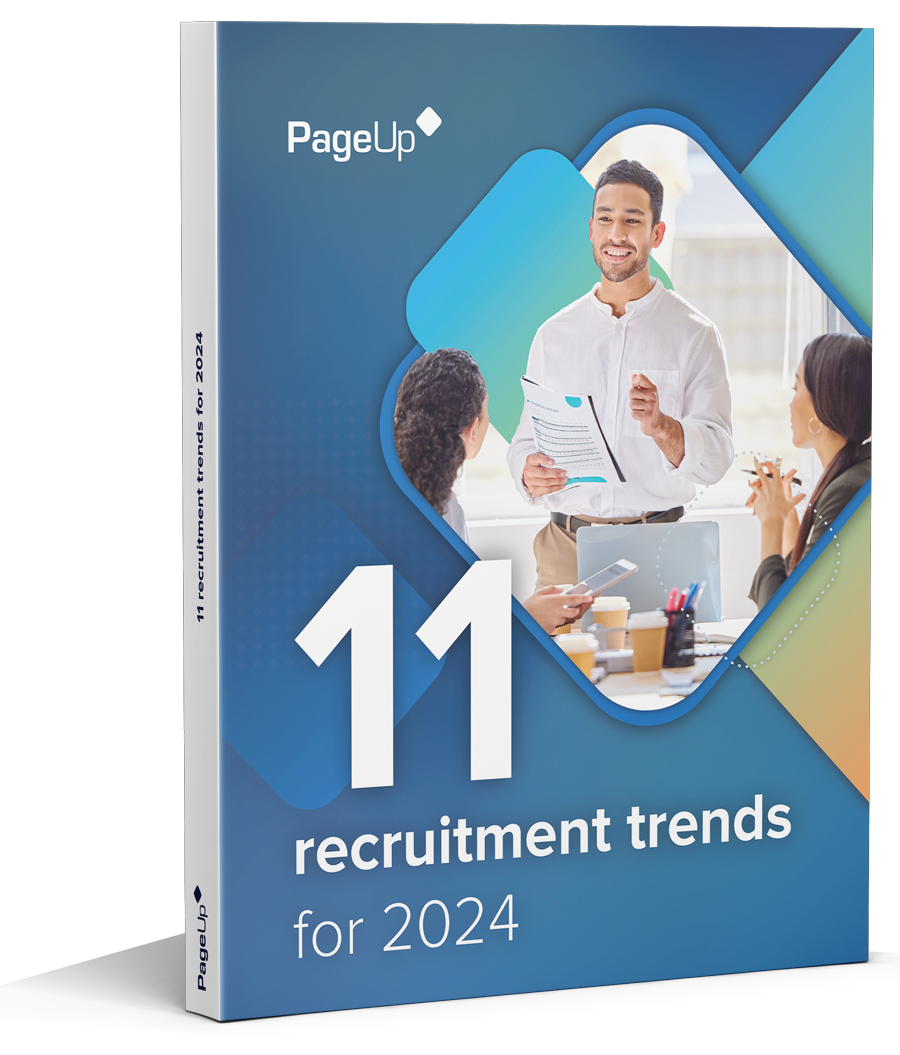In today’s fast-paced working world, data runs the show when it comes to key decision-making. Lucky for us, technology has made it easier than ever to access analytics and gain insights. But, the difference between tracking numbers for the sake of it and identifying those that really matter, can be the rise or fall of a successful strategy.
For TA teams navigating the current hiring market, leveraging recruitment metrics can allow you to build your recruitment strategy to achieve superior hiring outcomes. According to Aptitude Research, less than half of talent leaders are currently measuring the effectiveness of their recruitment efforts. Analysing the results of your talent acquisition strategy can fast-track hiring processes, enable smarter decision making, and ensure the long-term success of a candidate within your organisationorganization.
Let’s dive into the world of recruitment metrics: why they are important, how you can leverage them to boost your talent acquisition strategy, and steps you can take to embed them into your organisationorganization.
Why are recruitment metrics so important?
Recruitment metrics are a set of defined data that can be gathered across your hiring process. This can include candidate conversion rates, time-to-hire, sourcing channel effectiveness, quality of hire and many more. These metrics shed light on crucial aspects of your HR strategy including candidate attraction, hiring ability and retention of talent. The latest PwC Global CEO Survey revealed that CEOs estimate a staggering 40% of the time within hiring processes is inefficient. Metrics can be used to track hiring success and evaluate recruitment processes to develop a data-driven recruitment funnel.
Whether you aim to enhance candidate engagement, improve the quality of hires, champion DEI initiatives or increase candidate trust, monitoring key data points enables you to gauge efficiency, pinpoint opportunities or challenges, and drive better outcomes for your recruitment strategy. Enabling HR leaders to report on meaningful data that can be communicated to teams and stakeholders to highlight the impact and value of your HR strategy.
Leveraging recruitment metrics to drive your talent acquisition strategy
There are countless recruitment metrics that you can use to inform your talent acquisition strategy. The trick is to look beyond ‘vanity metrics’, such as time-to-fill on its own, to find the right combination of metrics to track based on your organisationorganization’s unique goals and challenges. This will look different for each organisationorganization, so let’s explore some examples of what you might consider focusing on this year:
1. Enhancing your candidate experience to boost applications
From viewing a job ad, to starting an application, completing it, and clicking submit, each step has an opportunity for candidates to abandon the process. Monitoring the drop-off rate across the application funnel allows you to track how many job seekers you are reaching, the effectiveness of getting them to the next stage and where candidate drop-offs are occurring. This provides you with the visibility to make amendments to improve the candidate experience and increase application conversions.
If the drop-off rate is high when candidates are completing their application, maybe there are too many steps or fields asking for more information than you need. Digging further, you can look at whether a particular question or request is a consistent drop-off point. Compare the results across devices. Are drop-offs higher on mobile? Is the application process user-friendly on all devices? Considering all potential factors will help you identify the cause and how it can be fixed to create a better candidate experience across your application process.
Another approach to decreasing drop-offs and increasing conversions is looking at how you can entice job seekers with an incomplete application back. Adding automated workflows that send reminders to candidates to complete their application, will help ensure you don’t lose out on talent that might need an extra nudge to submit it.
2. OptimisingOptimizing sourcing channels for quality over quantity
When it comes to sourcing channels, achieving a high volume of applications doesn’t necessarily mean that the channel is helping you to find the best talent and new hires for your team. Certain channels might give you a high quantity, but are they also providing quality? Compare your sourcing channels across job boards, careerscareer sites, social media, employee referrals, internal mobility and talent pools. Analyse your sourcing channel effectiveness to see where your new hires are coming from and what channels are working well for your organisationorganization. Breaking down sourcing channel effectiveness further by occupation, could help you to identify if some channels work better when hiring for particular job functions over others.
Sourcing channel effectiveness combined with the knowledge of your sourcing channel cost, provides you with powerful insight to inform your talent acquisition strategy. Learning where to focus your efforts will give time back to recruiters, reduce excess expenditure on the channels that aren’t working and drive higher quality applications through those that are.
3. Future proofing your recruitment efforts from short to long-term
Technology is making hiring data more accessible and organisationsorganizations are fine-tuning how they measure the success of their recruitment efforts. Volume metrics such as the number of hires or the speed at which roles are filled, are no longer enough on their own. Time to hire can show great insight into the efficiency of your hiring process and the resources required to fill positions. When making amendments to your recruitment strategy or processes, tracking the time to hire can help analyse the impact changes are having. Using this recruitment metric in conjunction with quality of hire, can highlight the long-term effectiveness of your process to increase retention and reduce employee churn.
In 2024, improving the quality of hire is the top workforce priority for 45% of organisationsorganizations. Successful teams are focused on the quality of new hires to paint a full picture and know where to focus to deliver the best talent. You can use various indicators when calculating the quality of hire including job performance, turnover rates, employee engagement, employee and hiring manager feedback, client feedback, and time taken to train new hires. Looking beyond onboarding and tracking the long-term success of a candidate within the organisationorganization can help you lower hiring costs and build better teams. If your quality of hires is low and churn is high, look inwards at your high performers and talent with long tenures to see what qualities they possess to seek out in potential candidates. Revisiting your interview process to ensure greater alignment with business objectives, values and culture can help ensure long-term success within your organisationorganization.
Steps to embed HR metrics into your organisationorganization
1. Decide on the metrics
The first step is to understand what you want to measure and why. What business problems are you trying to solve? Do you need to attract more applicants, improve your candidate experience or optimiseoptimize sourcing channel spend? Outlining your objectives will help you select the metrics your organisationorganization needs to track to achieve them.
2. Capture accurate data
When you have defined a set of metrics it is important to ensure you are collecting all the accurate data needed to paint a full picture. That includes the good, the bad, and the ugly data. Although it can be tempting to leave out certain details if it casts part of the recruitment process in an unfavourable light, incorrect data can greatly hinder your progress. Make sure you have the tools in place to provide visibility over the numbers with ease. Transparency is the key step towards improving your HR strategy and creating strategic value for your organisationorganization.
3. Educate teams and stakeholders
Educating teams on the reason behind capturing data in the system, what can be learned from it and the impact it can have is crucial. This can avoid any skewing of metrics and missing data points, and help to create a common understanding of why your metrics are important and gain buy-in from key stakeholders. Enabling teams and stakeholders to have visibility over the relevant metrics with ease, through dashboards or regular reports, will help motivate and create excitement around achieving better outcomes.
4. Communicate the results
Don’t sit on the data. Communicate the metrics in the language the rest of the business will understand. Be honest about the challenges you’re facing, highlight the achievements or progress made, and link the metrics to the impact on productivity or costs where possible. This will help showcase the ROI of your recruitment strategy.
To stay ahead in the competitive candidate market, leveraging recruitment metrics that reflect your organisationorganization’s goals will help you make smart data-driven decisions and drive better hiring outcomes. Analysing the recruitment metrics that really matter, will help you to create a winning talent acquisition strategy.
If you would like to learn more about the top trends shaping the recruitment industry this year, download our latest report on 11 recruitment trends for 2024 here.
Fresh insights for HR
Stay up to date with HR trends, tips and more when you sign up for our industry newsletter





